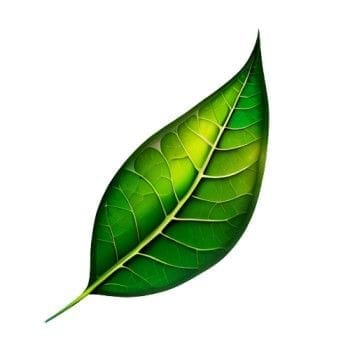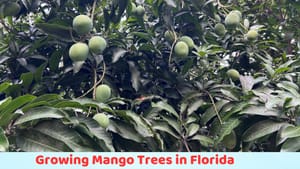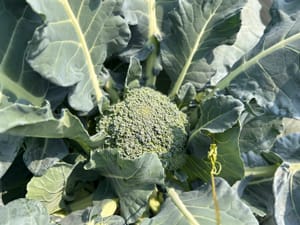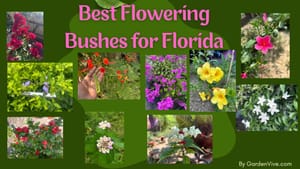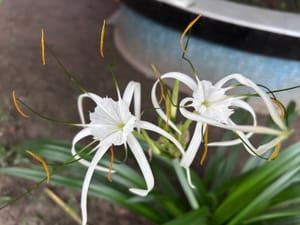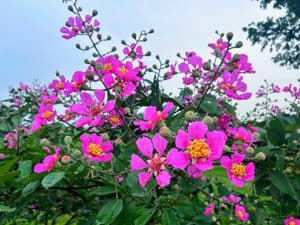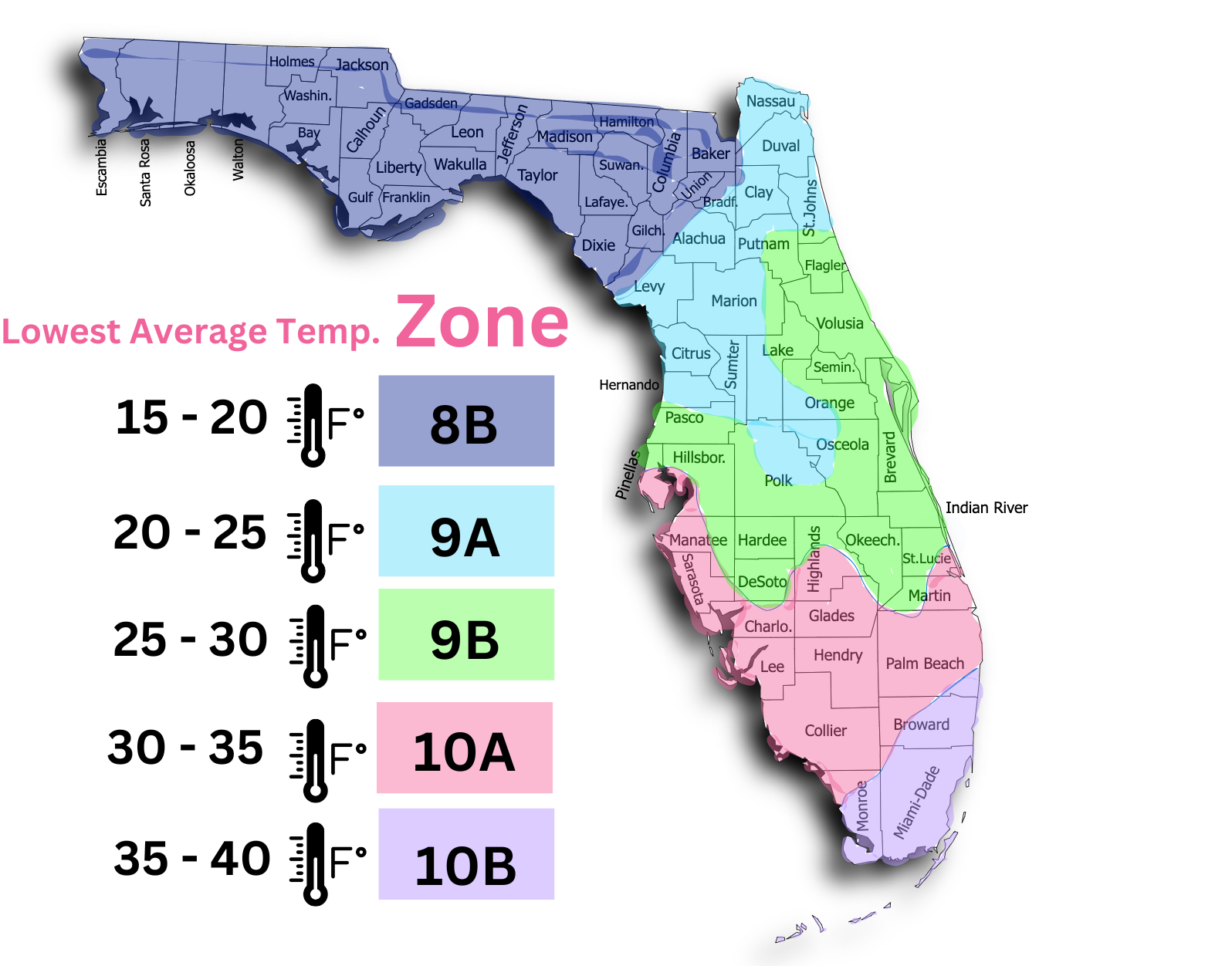
If you compare the growing zone map of Florida over the internet, you can find small differences in maps.
You might find this map outdated and if you consider the recent climate then a lot of people will say almost there is no zone 8b left in Florida. But I want to make this map simple for the gardeners in Florida. You can follow this map and in zone 8b, you can follow zone 8a guidance.
I have created this Florida growing zone map or you can say Florida gardening zones map as per my personal viewpoint.
The temperature mentioned in the Zone map is in Fahrenheit units.
I have considered the climate changes that we are facing now. I have considered the soil types as well. Depending upon all the major factors, we can decide which type of plant we can grow in which part of Florida.
So, I have divided Florida into 5 Zones. You can see a difference in the temp. chart from other zone maps as I am considering the climate changes as well.
The temperature mentioned in the top image is the annual average extreme lowest temperature.
A full-year planting chart is available here: Florida Planting Calendar and for South Florida specific chart check: South Florida Planting Chart/Calendar
Is it really important to know your gardening zone?
Yes, if you want to be serious and want to make your gardening hobby a step ahead then it's time to plan your gardening journey according to your gardening zone.
Your zone number will tell you when to grow what.
How does the USDA Zone numbering work?
The Zone numbering in the US starts with the number 1 (coldest) and goes up to number 13(warmest). Each of the 14 Zones is divided into 10 degree F range. (Average Lowest annual temperature in winter).
You have noticed a and b in the Zone numbering because each zone is divided into two sub-zones with a 5-degree F temp. difference.
Florida's USDA Zone (Hardiness Zone)
In Florida, this Zone numbering starts with Zone 8 and ends at Zone 11.
Now you might be wondering why I am only showing Zone 8 to Zone 10 in the Florida USDA zones map. The reason is I want to make the map as simple as possible and it will not affect your gardening journey even if you follow my map.
Zone 11 is at the bottom of the Florida map which is really a small area and if you even follow the gardening rules of Zone 10 in that small area, it will be fine for your gardening journey.
Breakdown of Florida’s Gardening Zones
Believe me or not, Florida is the Heaven for the gardeners in the US. You can find Zone 8 to Zone 11 in Florida, which means you can literally grow anything (from temperate vegetables to tropical fruits) you want here.
Now I am going to explain each zone of Florida one by one:
(It will not be possible for me to explain in depth as it will become a very long article. You can get an overview from here, and later on, I will explain each zone in brief in new articles)
Zone 8a - Northwestern Florida
| Characteristic | Details |
|---|---|
| Winter Temperatures | 10°F to 15°F (-12°C to -9°C) |
| Region | Parts of the Florida Panhandle, such as Tallahassee. |
| Cool-Season Crops | Ideal for growing cool-season vegetables like broccoli, lettuce, and carrots during fall and winter. |
| Flowers | Hardy Hibiscus, Pink Skullcap, Southern Magnolia, Roses |
| Frost Concerns | Regular frost means frost-tolerant plants are essential; some perennials may require protection during colder snaps. |
| Popular Plants | Camellias, azaleas, and deciduous fruit trees like peaches thrive in this zone. |
Zone 8b - North Florida
| Characteristic | Details |
|---|---|
| Winter Temperatures | 15°F to 20°F (-9°C to -7°C) |
| Region | Stretches across North Florida, including cities like Gainesville and parts of Jacksonville. |
| Transition Zone | Marks a transition between the cooler northern regions and the warmer central regions. |
| Extended Growing Season | Longer growing season than Zone 8a, with more options for warm-season crops. |
| Popular Plants | Pansies, snapdragons, and cold-hardy citrus varieties like satsumas thrive in this zone. |
| Popular Flowers | Roses, daylilies, irises, and coneflowers are well-suited to Zone 8b’s climate. |
Zone 9a (North-Central Florida)
| Characteristic | Details |
|---|---|
| Winter Temperatures | 20°F to 25°F (-7°C to -4°C) |
| Region | Includes parts of North-Central Florida, such as Ocala and parts of Orlando. |
| Mild Winters | Milder winters allow for a wider variety of plants, including some semi-tropical species. |
| Year-Round Gardening | Gardeners can often grow vegetables year-round, with winter crops like kale and winter greens thriving. |
| Popular Plants | Hibiscus, loquat trees, and southern magnolias are well-suited to this zone. |
| Popular Flowers | Plumeria, gardenias, and marigolds thrive in the warm conditions of Zone 9a. |
If you want a Zone 9 planting calendar/schedule check: Zone 9 Planting Calendar (Charts) - You must love this as you will get the printable PDF file as well.
Zone 9b (Central Florida)
| Characteristic | Details |
|---|---|
| Winter Temperatures | 25°F to 30°F (-4°C to -1°C) |
| Region | Covers much of Central Florida, including Tampa, St. Petersburg, and parts of Orlando. |
| Warm Winters | Supports a wide range of both temperate and tropical plants due to its warm winter temperatures. |
| Ideal for Citrus | Citrus trees flourish in this zone, making it one of the prime citrus-growing regions in Florida. |
| Popular Plants | Bougainvillea, agapanthus, and avocado trees are well-suited to this zone. |
| Popular Flowers | Hibiscus, plumeria, and lantana thrive in the warm climate of Zone 9b. |
Zone 10a (South-Central Florida)
| Characteristic | Details |
|---|---|
| Winter Temperatures | 30°F to 35°F (-1°C to 1°C) |
| Region | Includes parts of South-Central Florida, such as Fort Myers, Naples, and parts of West Palm Beach. |
| Subtropical Climate | Features a subtropical climate ideal for growing tropical and subtropical plants. |
| Year-Round Growing | Almost no frost risk, allowing for year-round gardening of a wide variety of crops and flowers. |
| Popular Plants | Mangoes, papayas, and tropical palms thrive in this zone. |
| Popular Flowers | Bird of paradise, orchids, and heliconias are well-suited to the warm and humid climate of Zone 10a. |
Zone 10b (South Florida)
| Characteristic | Details |
|---|---|
| Winter Temperatures | 35°F to 40°F (1°C to 4°C) |
| Region | Encompasses South Florida, including Miami, the Florida Keys, and parts of Everglades National Park. |
| Tropical Climate | Boasts a tropical climate with minimal frost risk, perfect for tropical plants. |
| Ideal for Tropical Fruits | Bananas, pineapples, lychees, and other tropical fruits thrive in this zone. |
| Popular Plants | Coconut palms, bromeliads, and bamboo are well-suited to this zone. |
| Popular Flowers | Hibiscus, bougainvillea, and frangipani flourish in the warm, humid conditions of Zone 10b. |
Zone 11a (Extreme Southern Florida)
| Characteristic | Details |
|---|---|
| Winter Temperatures | 40°F to 45°F (4°C to 7°C) |
| Region | Includes the extreme southern tip of Florida, such as the Florida Keys and parts of Key West. |
| Tropical Paradise | Features a tropical climate with virtually no frost, ideal for the most tropical plants and fruit trees. |
| Year-Round Growing | Year-round growing conditions allow for a diverse range of plants and vegetables, including exotic tropical fruits. |
| Popular Plants | Papayas, mangoes, and coconut palms thrive in this zone. |
| Popular Flowers | Bird of paradise, orchids, and plumeria are perfect for the warm and humid conditions of Zone 11a. |
Zone 11b (Southernmost Florida)
| Characteristic | Details |
|---|---|
| Winter Temperatures | 45°F and above (7°C and above) |
| Region | Includes the southernmost parts of Florida, such as the Florida Keys and the southern parts of Miami. |
| Tropical Climate | Features a true tropical climate with no frost, ideal for the most tropical plants and exotic fruit trees. |
| Year-Round Growing | Supports year-round gardening with a wide range of tropical and subtropical plants. |
| Popular Plants | Mangoes, avocados, and coconut palms thrive in this zone. |
| Popular Flowers | Hibiscus, bougainvillea, and frangipani are ideal for the warm and humid conditions of Zone 11b. |
